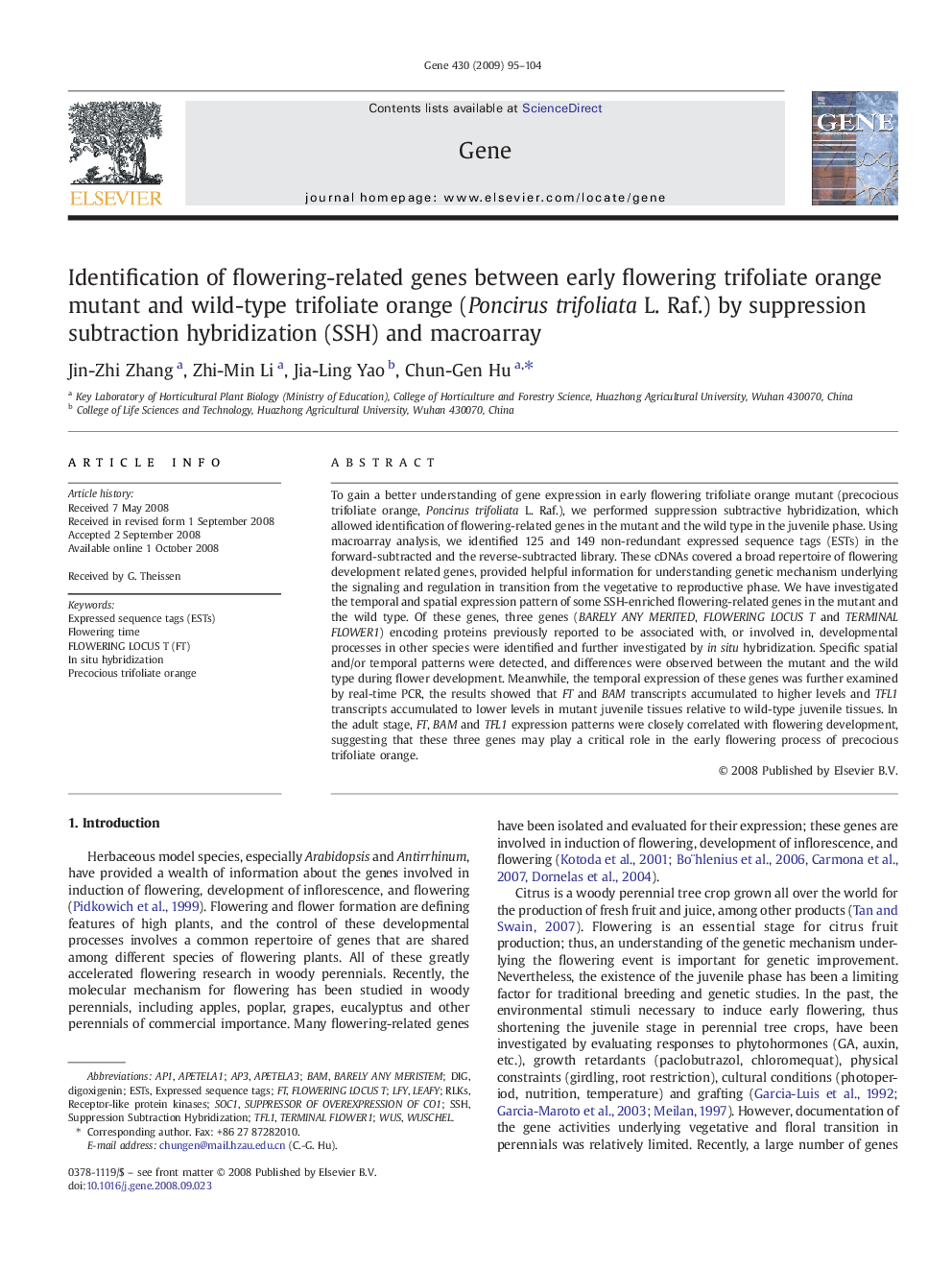| Article ID | Journal | Published Year | Pages | File Type |
|---|---|---|---|---|
| 2818937 | Gene | 2009 | 10 Pages |
To gain a better understanding of gene expression in early flowering trifoliate orange mutant (precocious trifoliate orange, Poncirus trifoliata L. Raf.), we performed suppression subtractive hybridization, which allowed identification of flowering-related genes in the mutant and the wild type in the juvenile phase. Using macroarray analysis, we identified 125 and 149 non-redundant expressed sequence tags (ESTs) in the forward-subtracted and the reverse-subtracted library. These cDNAs covered a broad repertoire of flowering development related genes, provided helpful information for understanding genetic mechanism underlying the signaling and regulation in transition from the vegetative to reproductive phase. We have investigated the temporal and spatial expression pattern of some SSH-enriched flowering-related genes in the mutant and the wild type. Of these genes, three genes (BARELY ANY MERITED, FLOWERING LOCUS T and TERMINAL FLOWER1) encoding proteins previously reported to be associated with, or involved in, developmental processes in other species were identified and further investigated by in situ hybridization. Specific spatial and/or temporal patterns were detected, and differences were observed between the mutant and the wild type during flower development. Meanwhile, the temporal expression of these genes was further examined by real-time PCR, the results showed that FT and BAM transcripts accumulated to higher levels and TFL1 transcripts accumulated to lower levels in mutant juvenile tissues relative to wild-type juvenile tissues. In the adult stage, FT, BAM and TFL1 expression patterns were closely correlated with flowering development, suggesting that these three genes may play a critical role in the early flowering process of precocious trifoliate orange.
